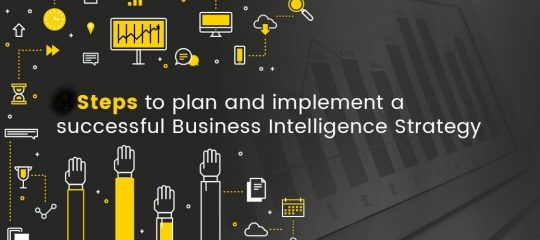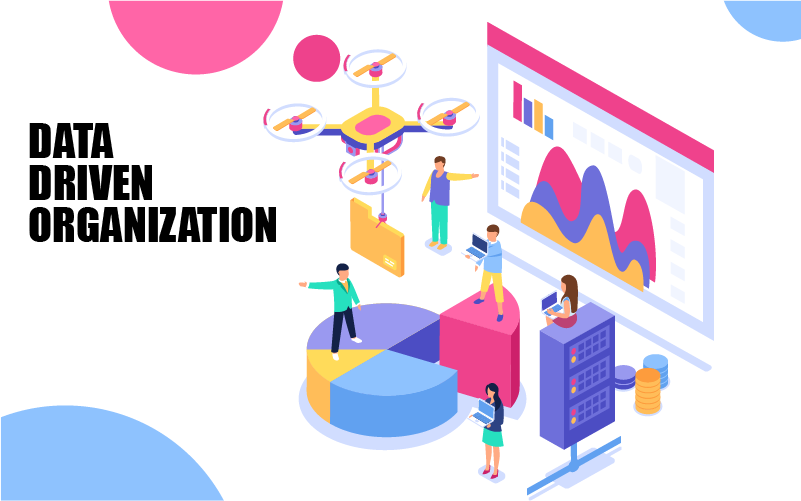
4 practical ways to become a data-driven business
To be among the world-class leaders, all you need is a mild shift in your attitude. Keep aside your gut feeling and make yourself a data-driven business. One thing that deciphers the best from the rest is their decision-making pattern and data use.
Studies say – 3/5th of the decisions taken by the leading companies are based on data. On the contrary, “laggard” companies’ take only a 1/10th of their decision based on data.
In which group do you lie?
In recent times, a Forrester Research analysis has highlighted a new type of organization known as the insight-driven business, also referred to as a data-driven business. And they have an average growth rate of more than 30%.
What is a data-driven business?
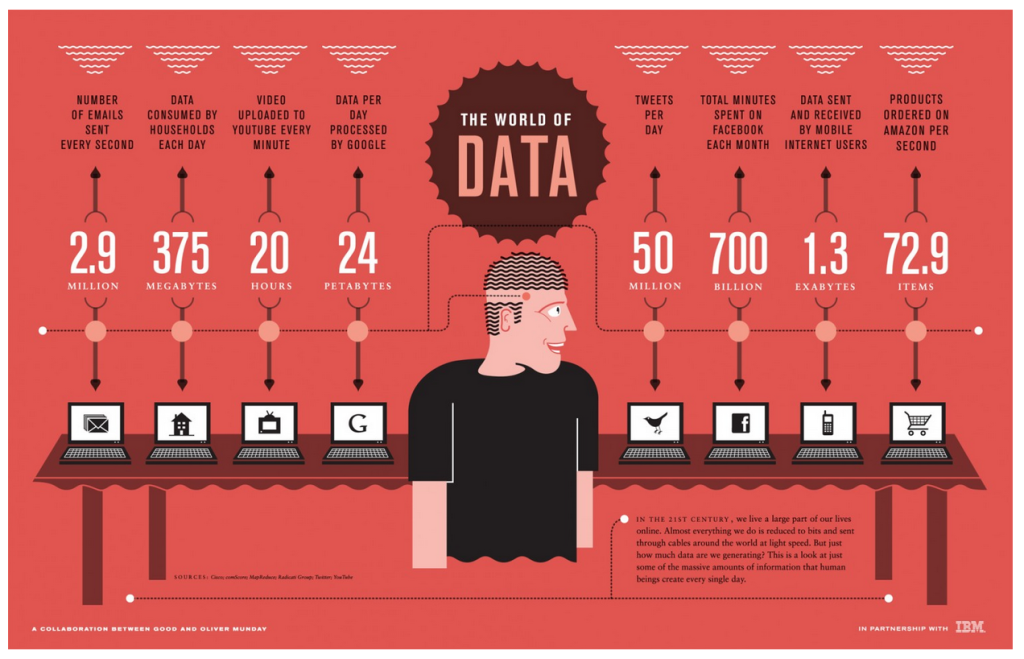
Being data-driven simply means following/building strategies based around the data that is available at hand.
A sound data-driven business nurture a cooperative and goal-oriented culture. Leaders have faith in data, and they are very much governance-oriented. From a technological aspect, they ensure the quality of data collected and implement analytics in their daily operations.
In a data-driven organization, the data culture does not remain limited to the top leaders but flows down to employees. Multiple people from different departments access the data and use it during decision-making.
So, it’s not just data engineers and data scientists who use data, but business analysts and not-so-technical business users, as well.
Christopher S Penn, the author of How to Find the Right Social Media Influencers, has categorized the evolution of a data-driven business into five stages:
5 evolution stages of a data-driven company
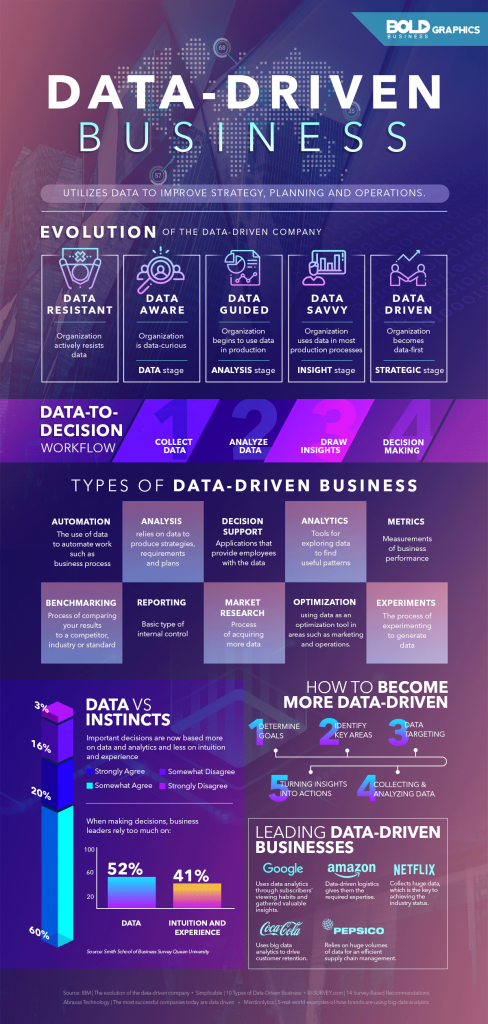
- Data resistant – Companies that resist using data for any purpose at all, fall into this stage. The change towards being a data-driven organization needs to come from the top-level and be an entrepreneurial effort.
- Data-curious – These organizations understand the importance of data but in a limited way. Their data mostly goes unanalyzed and lies in the dashboards and reports. The journey from this stage to the next comes with the eagerness to understand the data gathered.
- Data-aware – Many companies remain stuck at this phase for many years. They start making data-driven decisions in some cases. And despite reaping the benefits from data-driven decisions, they cannot justify the cost of moving on to the next stage.
- Data savvy – These companies start utilizing data analytics to answer business concerns across different operations and departments. They embrace data as their strategic resource. Their meetings begin with data, and they use proper governance structures to gather and measure their milestones.
- Data-driven – An evolution that starts at the top level keeps percolating to the lower levels at this stage. And in such data-driven organizations, data gets acceptance at every level.
You may also like to read: Are data visualization tools worth investing in as a small business?
How to become a data-driven business?
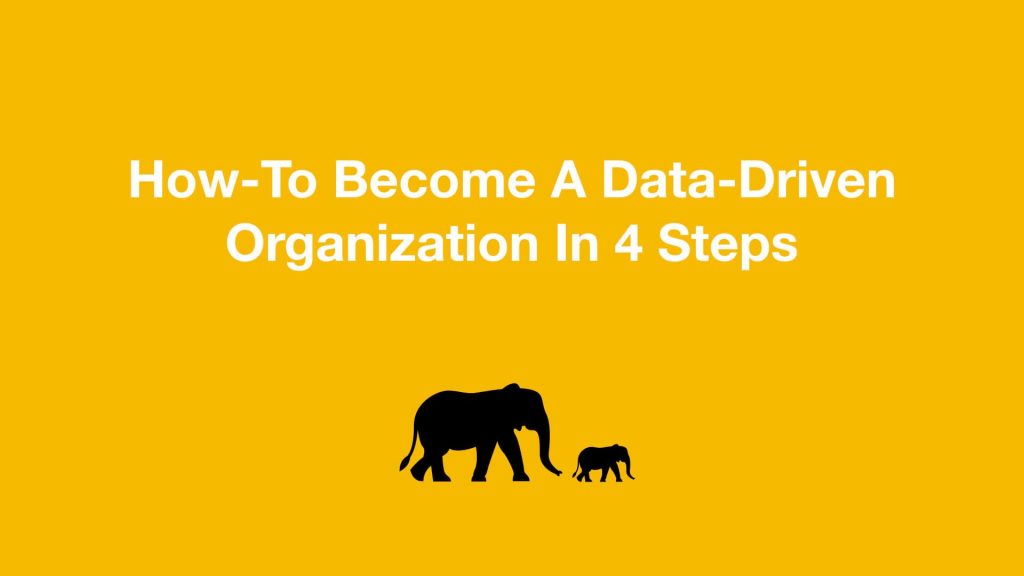
Here are 4 practical ways defined to give you head-start into making your company a data-driven one
Step 1: Understand your objectives and proceed.
For any planning, the first thing to know is your objective. Which goals do you want to improve?
Once you have clarity of your business goals, the next important thing is to collect relevant data. Data is available in abundance, and it’s right in front of you. But, you need to recognize it. Without relevant data, you will keep analyzing without any results.
For instance, if you want to improve your online user experience, you need to focus on your web analytics. Find out more about your visitors, from which channel you acquire them, their behavior on your web assets, etc. Are you using the correct keywords? Is your page optimized? Once you have complete information, you can improve your existing strategies and repeat your success formula.
Step 2: Implement data-governance policies
Collecting and storing data is not sufficient – you need to ensure that it’s reliable, transparent, real-time, and high quality. And it should also be standardized, structured, and stored securely.
Adopting a data governance policy is the most convenient and proven way to achieve this. It helps in stating clear guidelines for each phase, starting from the collection process to analysis. It not only improves the credibility of data but mitigates the chances of human errors.
Furthermore, data governance helps normalize data, draw relationships between different data sets, understand the datasets’ lineage, and visualize the same. It gives a clear idea of the data to the management, helping them make more complex decisions.
Step 3: Adopt the right technologies.
To simplify data analysis, employees need updated self-service tools with robust in-built features. Using outdated technologies can hinder a data-driven culture more than promoting it.
You should focus on investing in technology portfolio with AI-driven insights, data lakes, cloud-based collaboration tools, consistent data warehouses, and augmented analytics. Let us look at the three primary capabilities that these modern-day tools have:
- Automation – It helps in the model building management processes. For instance, using machine learning and natural language processing, data visualization tools build logic and process data.
- Reusability – It reduces effort and accesses the available resources. For instance, most BI tools come with in-built visuals, templates, and themes – all you need to do is use them smartly.
- Explainability – It makes the output easier for the end-users to understand. The tools’ capabilities depend significantly on how self-explanatory they are.
Step 4: Build a data literate culture
To be a data-driven business and encourage every member to speak the same language, you should start training your staff. It will help them to understand the importance of data and encourage them to imbibe the new culture. The biggest hindrance to becoming a data-driven company is culture and not technologies. So, build a mindset that accepts data.
Saying you want your business to be data-driven is something and actually getting it done is another! There are numerous obstacles that a business will face when it wants to take the data analytics route. To know about them head over to this blog on 7 challenges that businesses face when implementing data analytics.
Related blog: Getting started with a BI strategy
Closing thoughts on becoming a data-driven company
The New Decision Makers: Equipping Frontline Workers for Success states that “72percent of the companies surveyed have enjoyed reasonable productivity increase by supporting technology-enabled insights among frontline workers.” It also says among 20% of the participants (i.e., the ‘leaders’), approximately 67% have experienced an increase in revenue between 10 to 30 %.
Data is the most valuable commodity to unlock your organization’s full potentiality. And being a data-driven business is not an option but a requirement. If you can capitalize the end-to-end data insights now, you will surely stay ahead of your competitors in today’s data war.





